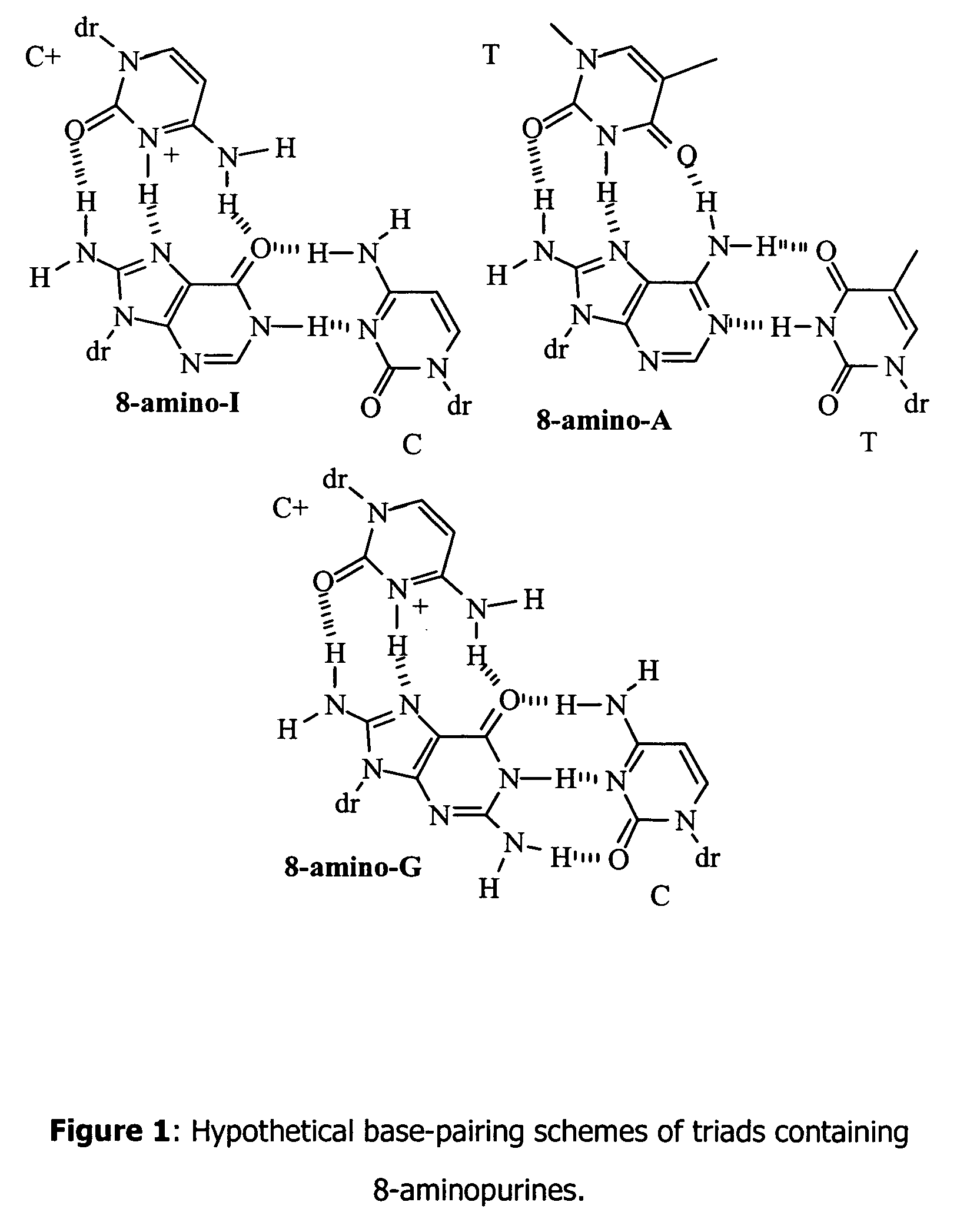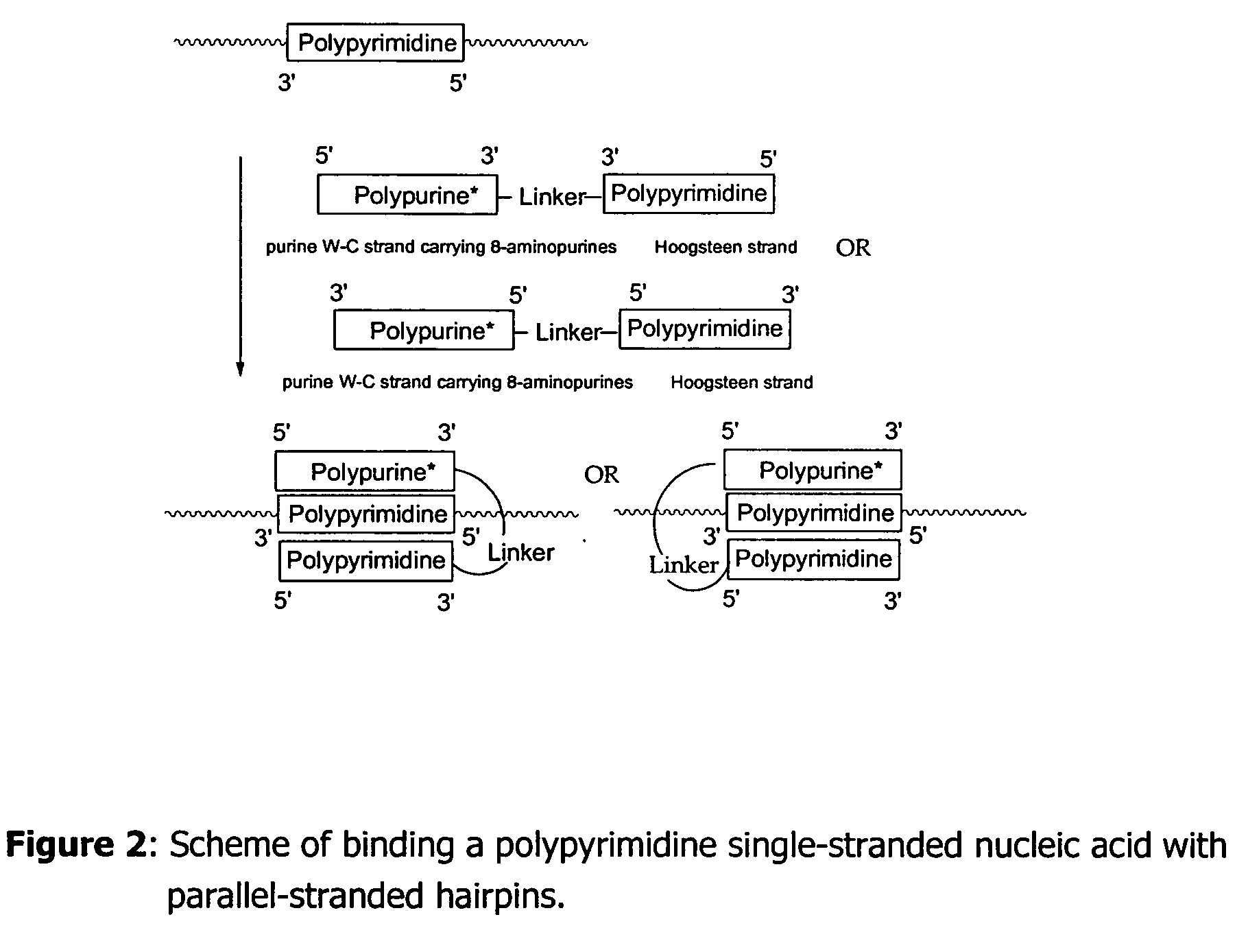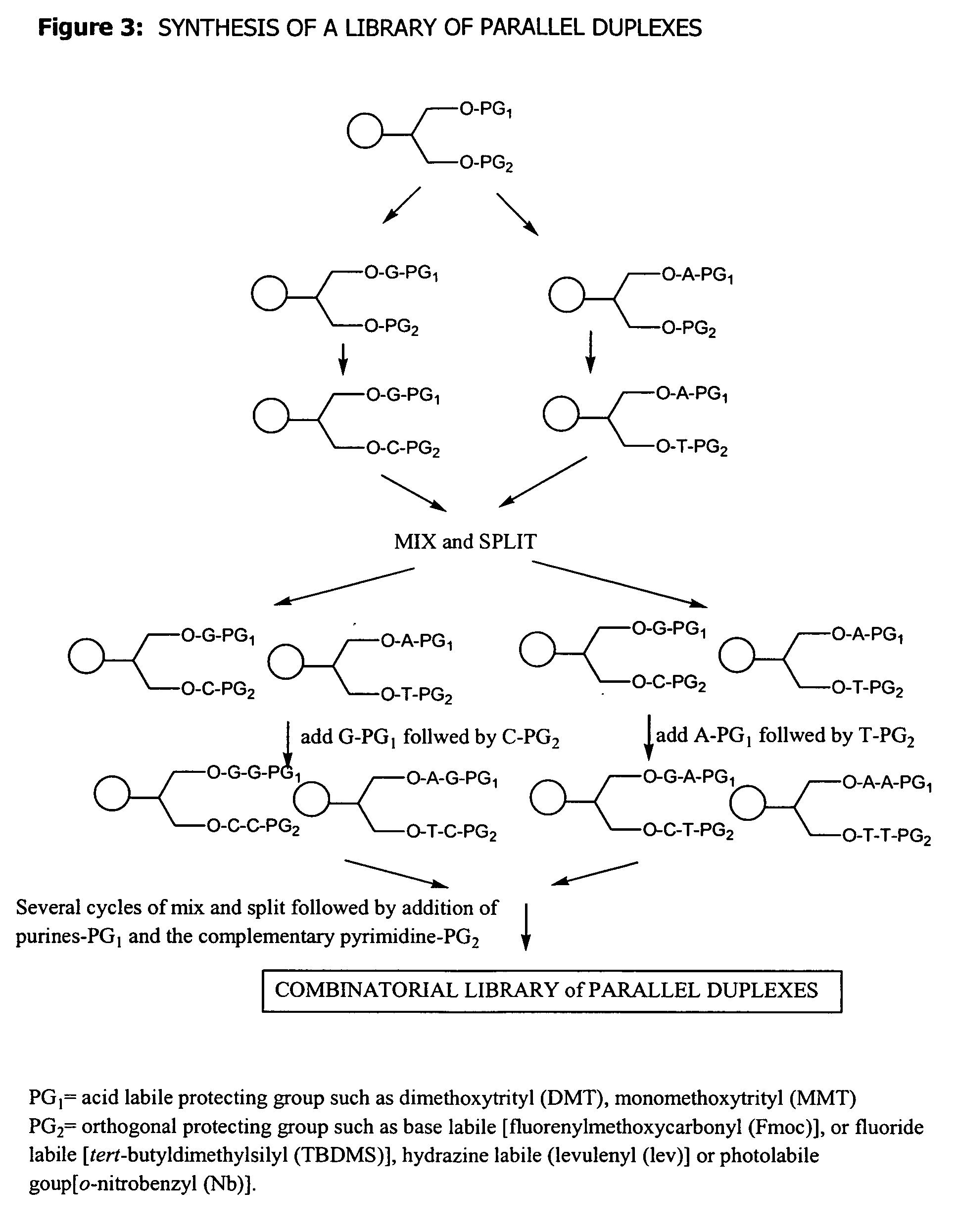Methods and compositions for in vitro and in vivo use of parallel stranded hairpins and triplex structures as nucleic acid ligands
a technology of nucleic acid ligands and triplexes, which is applied in the field of in vitro and in vivo use of parallel stranded hairpins and triplexes as nucleic acid ligands, can solve the problems of low stability of triple helices, and difficulty in identifying parallel duplexes as aptamers for a given protein or other kind of molecules using this method
- Summary
- Abstract
- Description
- Claims
- Application Information
AI Technical Summary
Problems solved by technology
Method used
Image
Examples
examples
[0042] In another embodiment of this invention the nucleic acid ligand can be used in vitro and / or in vivo as inhibitor or activator of a specific target. Potential targets may have enzymatic activity. One example of potential use of nucleic acid ligands of the invention is on patients with respiratory distress syndrome and other lung diseases such as pulmonary emphysema. Due to an overreaction of the immune system white blood cells called neutrophils flock to the lungs, releasing tissue-damaging enzymes such as elastase (as reported in Foronjy, R., et al., “The role of collagenase in emphysema,”Respir Res. (2001) 2:348-352), resulting in the loss of a lung structural protein called Elastin. Parallel-stranded hairpin and triplex structures of the invention are screened for binding capabilities to Elastase. Nucleic acid ligand candidates are useful for therapeutic purposes to prevent the enzyme from degrading connective tissue in the lung.
[0043] Another aspect of the invention inclu...
PUM
| Property | Measurement | Unit |
|---|---|---|
| Acidity | aaaaa | aaaaa |
| Stability | aaaaa | aaaaa |
Abstract
Description
Claims
Application Information
 Login to View More
Login to View More - R&D
- Intellectual Property
- Life Sciences
- Materials
- Tech Scout
- Unparalleled Data Quality
- Higher Quality Content
- 60% Fewer Hallucinations
Browse by: Latest US Patents, China's latest patents, Technical Efficacy Thesaurus, Application Domain, Technology Topic, Popular Technical Reports.
© 2025 PatSnap. All rights reserved.Legal|Privacy policy|Modern Slavery Act Transparency Statement|Sitemap|About US| Contact US: help@patsnap.com



